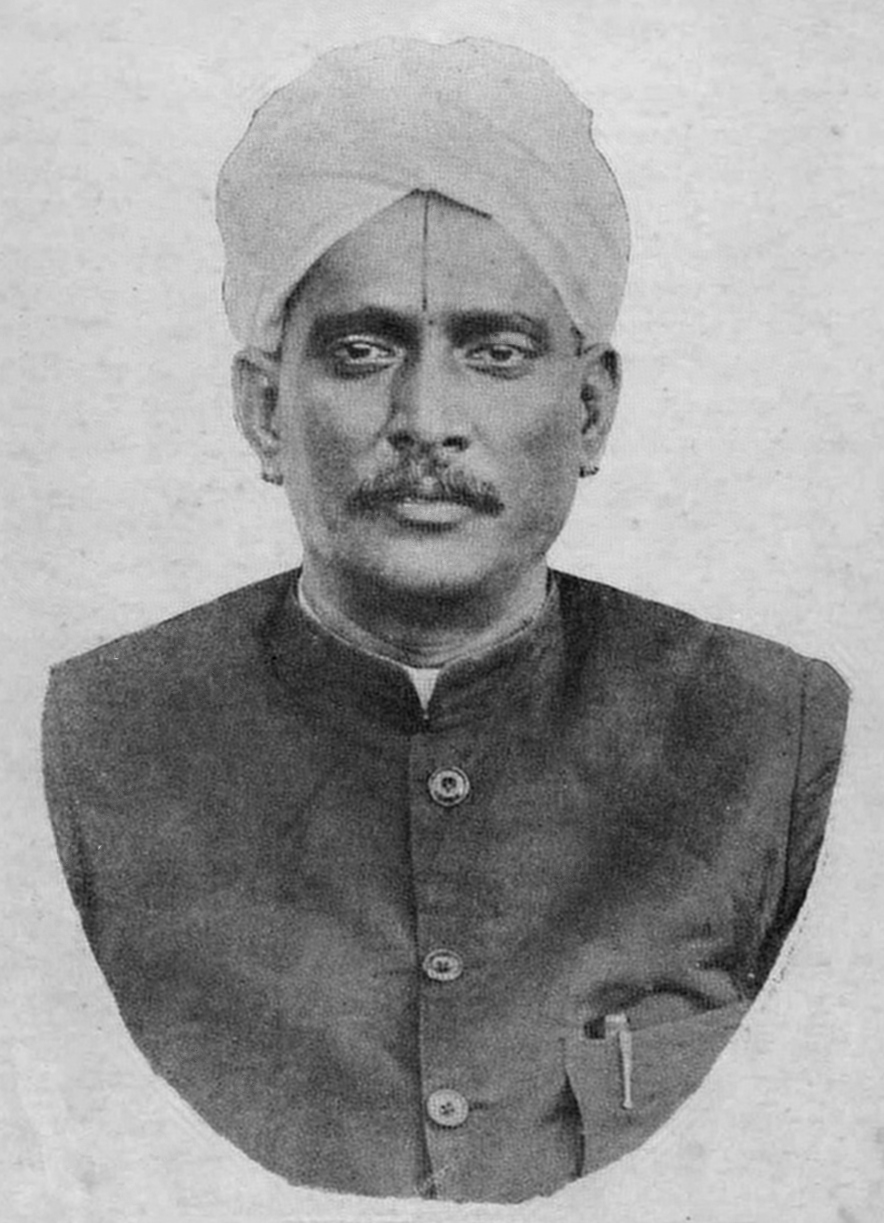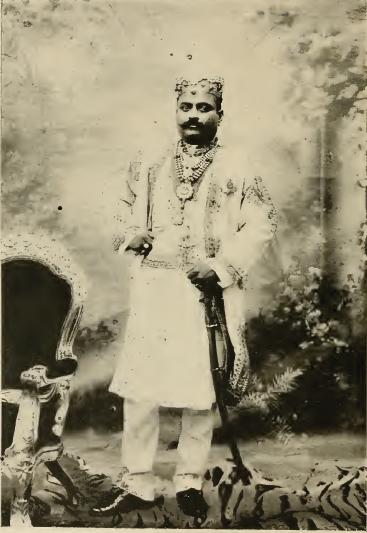|
1930 Madras Presidency Legislative Council Election
The fourth legislative council election to Madras Presidency after the establishment of dyarchical system of government by the Government of India Act, 1919 in September 1930. Justice party won the election and P. Munuswamy Naidu became the first Chief Minister. The main opposition party - Swaraj Party did not contest the elections due to its participation in the Civil Disobedience Movement. Background The election was held amid the severe world economic depression. Justice party decided to open its doors for Brahmans after a resolution made in the executive committee meeting held on 15 June 1930. Congress decided to boycott the election again in a meeting held in Lahore in 1929. 17 of its council members including Sathyamurthy, resigned their membership. Though the Congress did not participate in the election, it allowed its individual members like Swami Venkatachalam Chettiar and R. K. Shanmugam Chettiar to contest as Independents. Therefore, the contest was solely be ... [...More Info...] [...Related Items...] OR: [Wikipedia] [Google] [Baidu] |
Madras Legislative Council
Tamil Nadu Legislative Council was the upper house of the former bicameral legislature of the Indian state of Tamil Nadu. It began its existence as Madras Legislative Council, the first provincial legislature for Madras Presidency. It was initially created as an advisory body in 1861, by the British Raj, British colonial government. It was established by the Indian Councils Act 1861, enacted in the British parliament in the aftermath of the Indian Rebellion of 1857. Its role and strength were later expanded by the second Council Act of 1892. Limited election was introduced in 1909. The Council became a unicameral legislative body in 1921 and eventually the upper chamber of a bicameral legislature in 1937. After India became Indian independence movement, independent in 1947, it continued to be the upper chamber of the legislature of Madras State, one of the successor states to the Madras Presidency. It was renamed as the Tamil Nadu Legislative Council when the state was renamed as ... [...More Info...] [...Related Items...] OR: [Wikipedia] [Google] [Baidu] |
Pallar
The Pallar, who prefer to be called Mallar, are an agricultural community from the Indian state of Tamil Nadu. The Pallars traditionally inhabited the fertile wetland area referred to as ''Marutham'' in the literary devices of the Sangam landscape. Today, they are the dominant Dalit community of southern Tamil Nadu and have developed a reputation for being assertive about their rights. Due to the demand of the pallar community to classify them under a more dignified generic name Devendrakula Velalar, recently they together with six other related castes have been given the name Devendrakula Velalar; however their original caste name remains valid and they are still part of the Scheduled Caste list. Etymology The ''Pallar'' name may be derived from ''pallam'', which means a pit or low-lying area. This aligns with their traditional occupation of cultivators of the low wetlands. There is literary evidence that suggests that Pallars were traditional farmers who produced large quantit ... [...More Info...] [...Related Items...] OR: [Wikipedia] [Google] [Baidu] |
Elections In Madras Presidency
An election is a formal group decision-making process by which a population chooses an individual or multiple individuals to hold public office. Elections have been the usual mechanism by which modern representative democracy has operated since the 17th century. Elections may fill offices in the legislature, sometimes in the executive and judiciary, and for regional and local government. This process is also used in many other private and business organisations, from clubs to voluntary associations and corporations. The global use of elections as a tool for selecting representatives in modern representative democracies is in contrast with the practice in the democratic archetype, ancient Athens, where the elections were considered an oligarchic institution and most political offices were filled using sortition, also known as allotment, by which officeholders were chosen by lot. Electoral reform describes the process of introducing fair electoral systems wher ... [...More Info...] [...Related Items...] OR: [Wikipedia] [Google] [Baidu] |
1937 Madras Presidency Legislative Assembly Election
The first legislative assembly election for the Madras Presidency was held in February 1937, as part of the nationwide provincial elections in British India. The Indian National Congress obtained a majority by winning 159 of 215 seats in the Legislative Assembly. This was the first electoral victory for the Congress in the presidency since elections were first conducted for Madras Legislative Council in 1920. The Justice Party which had ruled the presidency for most of the previous 17 years was voted out of power. The assembly was constituted in July 1937 and C. Rajagopalachari (Rajaji) became the first Congress Chief Minister of Madras. The Congress also won the election held simultaneously for the Legislative Council. The victory in Madras was the Congress' most impressive electoral performance in all the provinces of British India. The Congress Government that was formed after the elections lasted till October 1939, when it resigned protesting India's involvement in the Se ... [...More Info...] [...Related Items...] OR: [Wikipedia] [Google] [Baidu] |
Great Depression
The Great Depression (19291939) was an economic shock that impacted most countries across the world. It was a period of economic depression that became evident after a major fall in stock prices in the United States. The economic contagion began around September and led to the Wall Street stock market crash of October 24 (Black Thursday). It was the longest, deepest, and most widespread depression of the 20th century. Between 1929 and 1932, worldwide gross domestic product (GDP) fell by an estimated 15%. By comparison, worldwide GDP fell by less than 1% from 2008 to 2009 during the Great Recession. Some economies started to recover by the mid-1930s. However, in many countries, the negative effects of the Great Depression lasted until the beginning of World War II. Devastating effects were seen in both rich and poor countries with falling personal income, prices, tax revenues, and profits. International trade fell by more than 50%, unemployment in the U.S. rose to 23% and ... [...More Info...] [...Related Items...] OR: [Wikipedia] [Google] [Baidu] |
Raja Of Bobbili
Raja Sri Ravu Svetachalapati Sir Ramakrishna Ranga Rao KCIE (20 February 1901 – 10 March 1978) was an Indian politician and ''zamindar'' who served as the Chief Minister of Madras Presidency from 5 November 1932 to 4 April 1936 and 24 August 1936 to 1 April 1937. Ramakrishna Ranga Rao was born in the royal family of Bobbili ''zamindari'' in 1901. He succeeded his father Venkata Kumar Krishna to the throne of Bobbili and ruled as zamindar from 1921 to 1948 and as the titular "Raja of Bobbili" from 1948 to 1978. He set up trusts and patronized sports and education. Ramakrishna Ranga Rao joined the Justice Party in 1930 and was elected to the Madras Legislative Assembly. He served as the Chief Minister or Premier of Madras Presidency from 1932 to 1936 and 1937. He resigned as Chief Minister in 1937 when the Justice Party lost the elections. From 1946 to 1951, he served as a member of the Constituent Assembly of India which framed India's Constitution. In his later year ... [...More Info...] [...Related Items...] OR: [Wikipedia] [Google] [Baidu] |
Rajah Muthiah Chettiar
Raja Sir Muttaiya Annamalai Muthiah Chettiar (5 August 1905 – 12 May 1984) was an Indian banker, politician, philanthropist, socialite and cultural activist who served as Mayor of Madras city (1933) and Minister of Excise and Education (1936–37) in the provincial government of Madras Presidency.Tamil scholar honoured ''The Hindu''. 6 August 2005. ''The Hindu''. 6 August 2006. He was holder of the hereditary title Kumar-rajah (1929–48) and later, Raja of Chettinad (1948–84). ... [...More Info...] [...Related Items...] OR: [Wikipedia] [Google] [Baidu] |
George Frederick Stanley
Sir George Frederick Stanley (14 October 1872 – 1 July 1938) was a British soldier and Conservative Party politician who served as a member of the UK Parliament for Preston and later, Willesden East. He also served the Governor of Madras from 1929 to 1934 and as Acting Viceroy of India in 1934. Life The sixth son of Frederick Stanley, 16th Earl of Derby, Stanley was educated at Wellington College and at the Royal Military Academy, Woolwich. In 1903 he married Lady Beatrix Taylour, youngest daughter of the 3rd Marquess of Headfort. He was the grandson of Edward Smith-Stanley, the former British Prime Minister. He entered the Royal Horse Artillery in 1893 and was promoted to Captain in 1900. He served in the Second Boer War in 1899–1900 and was Adjutant with the Honourable Artillery Company from 1904 to 1909. He later served in World War I and was mentioned in despatches and awarded the CMG in 1916. He was Conservative Member of Parliament for Preston from 1910 to ... [...More Info...] [...Related Items...] OR: [Wikipedia] [Google] [Baidu] |
Chalavadi
Chalavādi (Chalawadi, Chalwadi, Chelvadi, Chelavadi) is a dravida community, mainly belonging to Karnataka, "who are generally called formerly as Adi Dravida (Balagai), Channaiah or Channayya"(Bidar, Belgaum, Bijapur and Dharwad districts), Toti, Byagara, Whalliaru or Whallias, Holia's or Mha'rs (Belgaum side) ( Synonym's: Holar) is the servant of the right-hand, or eighteen-caste section of the community, and the custodian of its symbol, namely, the bell and the ladle (Gandadabatlu). These are made of brass and are connected together by a chain of the same metal, and sometimes they are placed before Sangameshwara gaddige and Pūjā made to them. The members use, among themselves, the term Balagai as they are classed among the eighteen castes that form the right-hand section of the community in Dravida countries. Chalavadi's are well dressed and stands with a blanket under his arm. He carries a brass image of Shiva seated on a bull. The image is overshadowed with the hood o ... [...More Info...] [...Related Items...] OR: [Wikipedia] [Google] [Baidu] |
Sakkiliar
Arunthathiyar is a scheduled caste community mostly found in the Indian state of Tamil Nadu. The term has two distinct usages: for the purposes of the state government's positive discrimination program, in 2009 it was designated an umbrella term for the Arunthatiyar, Chakkiliyar (Sakkiliyar), Madari, Madiga, Pagadai, Thoti and Adi Dravida communities; while the Office of the Registrar-General, which administrates the census of India, does not recognise all of those communities as one. The 2001 Census of India reported that there were 771,659 Arunthathiyar in Tamil Nadu, being 6.5 per cent of the Scheduled Caste population of the state. Origin Due to their speaking Telugu and lack of mention in early Tamil texts, most scholarly authorities believe the community originated in Andhra Pradesh and migrated to Tamil Nadu in the 17th century. However, the community's own history is that they are originally Tamil kings who ruled the area around Tagadur (Dharmapuri), who were tak ... [...More Info...] [...Related Items...] OR: [Wikipedia] [Google] [Baidu] |
Madiga
Madiga, also known as Maadiga, Maatangi, Makkalu and Mahadiga, are an artisan community from southern India. They mainly live in the states of Andhra Pradesh, Telangana and Karnataka, with a small minority in Tamil Nadu. Madigas are historically associated with the work of tannery, leatherwork and small handicrafts. Today, most are agricultural labourers. They are categorised as a Scheduled Caste by the Government of India. History Colonial writers such as Edgar Thurston and Siraj-ul-Hasan speculated Madiga derived from ''Mahadige'' or ''maha dige ra'' ("great man come down"). This is related to the common origin story that the Madigas originated from Jambavanta, who helped the gods out of a difficulty. Other stories claimed the Madiga caste was cursed to skin dead cattle because one of their ancestors slaughtered and ate the divine cow. Madigas have their own classes, the priestly class is known as ''Madiga Dasari''. The Sangaris, Thothis, etc. have different works for their ... [...More Info...] [...Related Items...] OR: [Wikipedia] [Google] [Baidu] |





